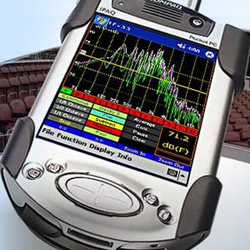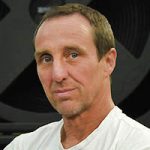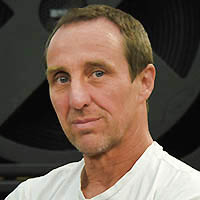Ever notice that some shows sound really bright, I mean, the “ouch kind-of-crazy painful” type of bright – and what is the engineer thinking?”
You’re a month into a tour, getting off a plane en route to another show. Hmm… Wonder if your ears are the same trustworthy, spring-fresh little helpers they were three weeks ago?
Or maybe – just maybe – the rigors of travel combined with that head cold, eight beers and four hours of sleep last night has dulled the senses a bit, and your mix has drifted away from being a sonically perfect masterpiece.
I refer to the phenomenon of our ears misleading us, and the resulting variation in the tonal balance of the mix, as “drift.” As in “it sounded great early on, but somewhere over the course of the last 30 shows, the mix has drifted in the ear bleed zone.”
There are many methods to equalize sound systems, and a mind-boggling quantity of different systems and venues out there to be equalized. Though there is a somewhat common goal of a smooth, flat sound, there is no standardized way to EQ, and not even a universally accepted sound to go for.
Every show has unique needs, and each engineer has his/her own style and approach to mixing, so finding a common method and result is pretty much out of the question. And even if a standard did exist, the reality is that the opening act or the third band at a “no soundcheck” festival is at the mercy of the whims of whomever EQ’d the system.
To make matters worse, the touring life can wreak havoc on our most important tool, our ears. Even on a good day, well rested and healthy, is the mix going to be as well balanced and as smooth as it was 30 shows, two continents and five plane flights ago?
Getting a grasp on a consistent sonic footprint to present to each new audience is one of the most difficult and overlooked aspects of being a sound engineer. How, among all the variables, does the engineer find that “grounding point” that can be carried from show to show?
And how does one avoid being oblivious to possibly subjecting that 30th audience to a mix that sounds like broken glass and razor blades?
Reference Points
There are a few fairly simple methods that can help engineers avoid drifting away and getting lost in the sonic landscape of misperception. Having reference points is extremely useful for identifying, locking on and preventing a mix from tonally drifting over the course of a tour or even throughout the show.
Our ears are our primary source of information, but they’re also just one of our five basic senses. However, smell is highly unlikely to be useful in all but the most extreme situations, and we don’t have the time to really run around tasting the equipment. So we’re left with sound, sight and touch, along with the ability to compare with the past to help us out.
Some people use their voice, some use a CD, while others use pink noise and some sort sophisticated test equipment such as (Rational Acoustics) Smaart, (Meyer) SIM or an RTA (real-time analyzer).
From a sound engineer’s perspective, there are several dilemmas and obstacles in the real world. As already noted, our hearing can be inconsistent over time for numerous reasons, and using your voice or a CD is perception based. Therefore, they can typically be inconsistent over time.















